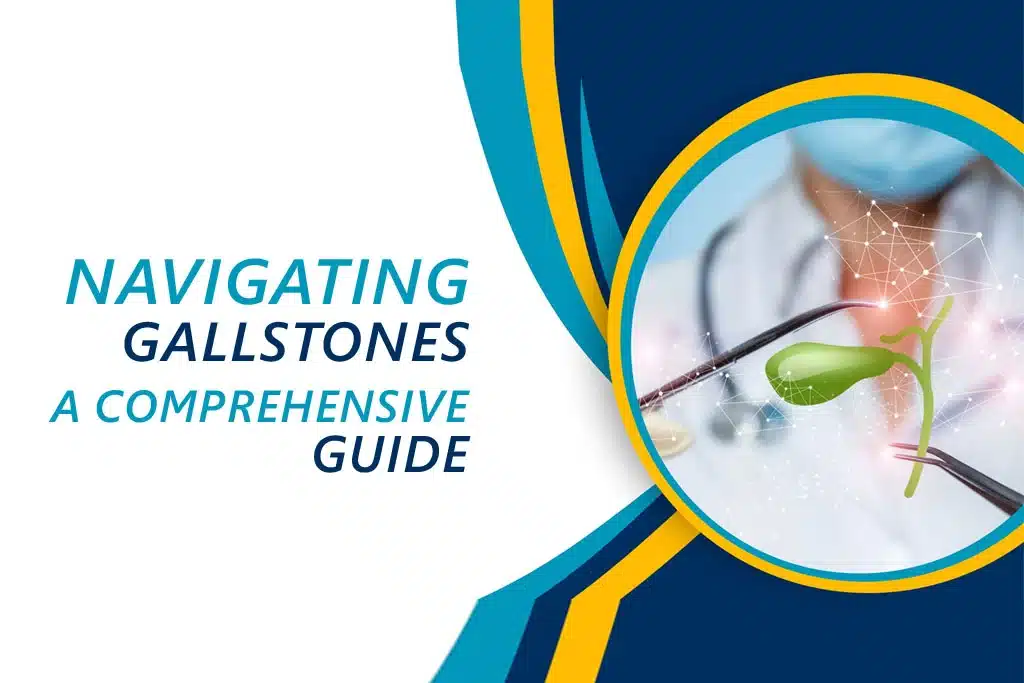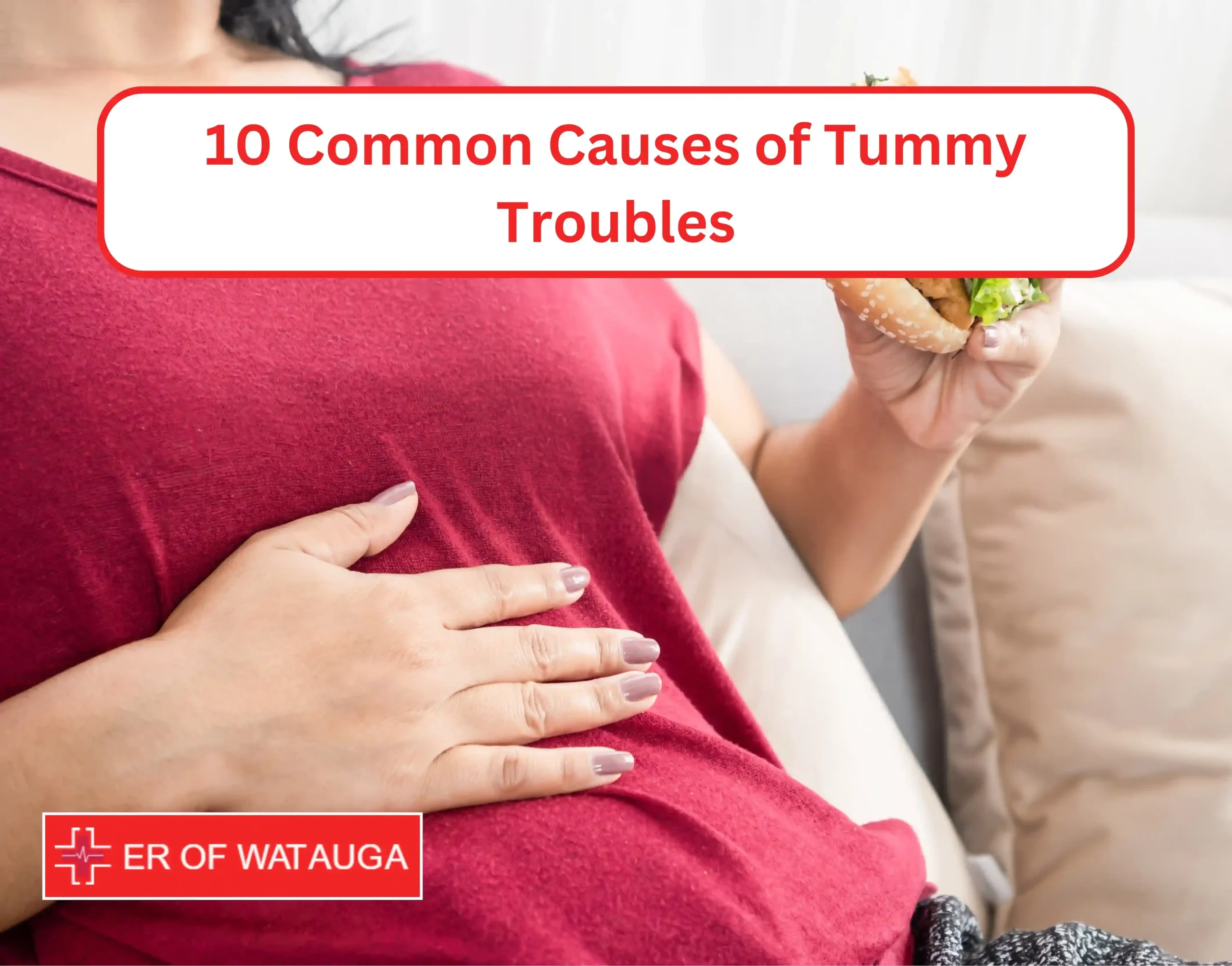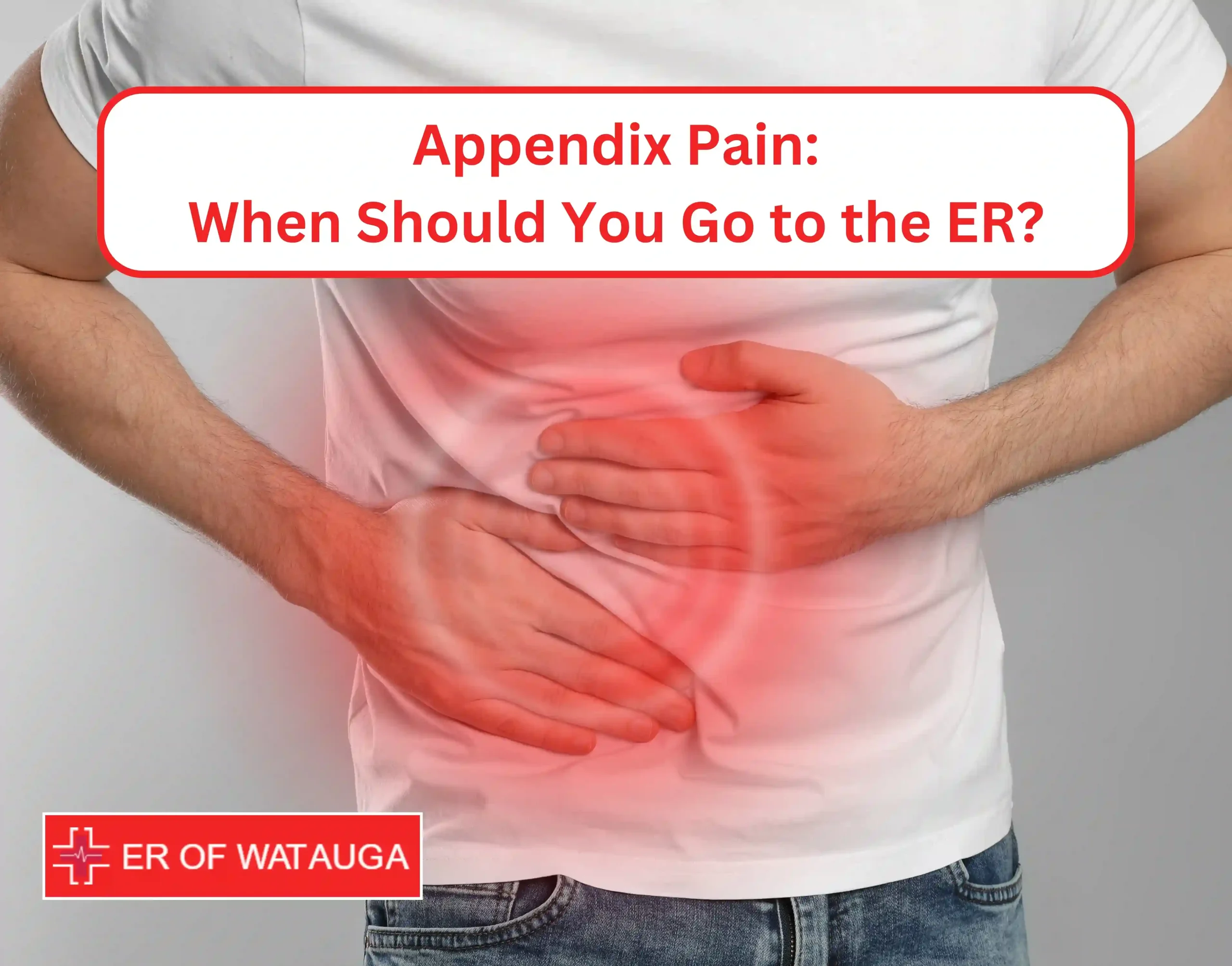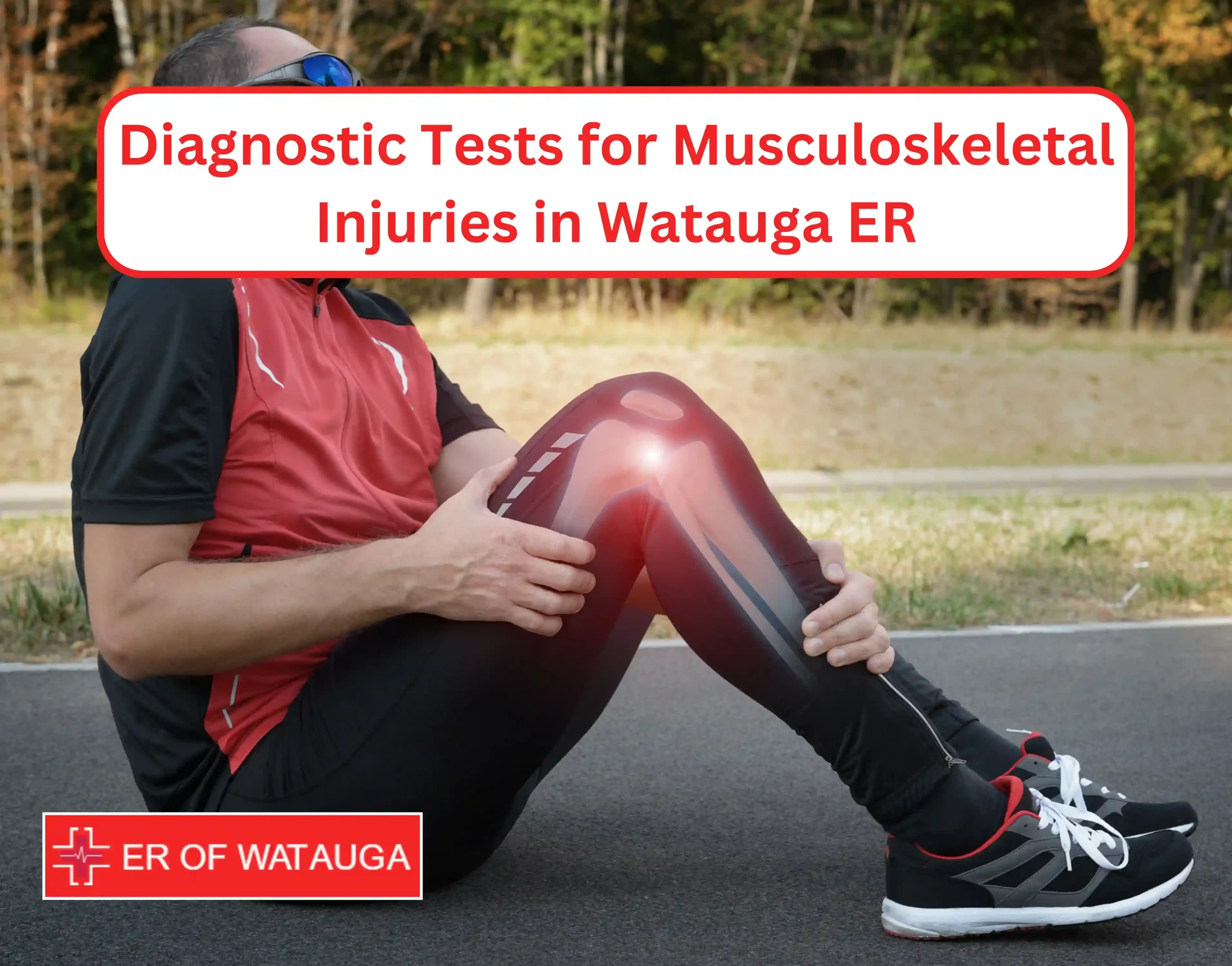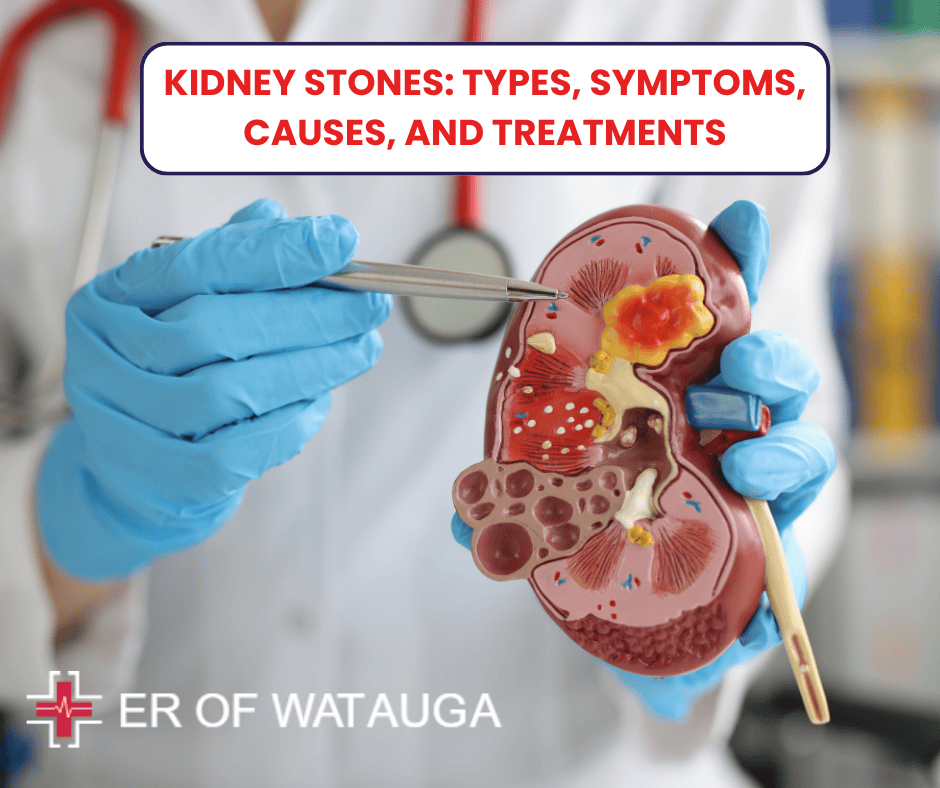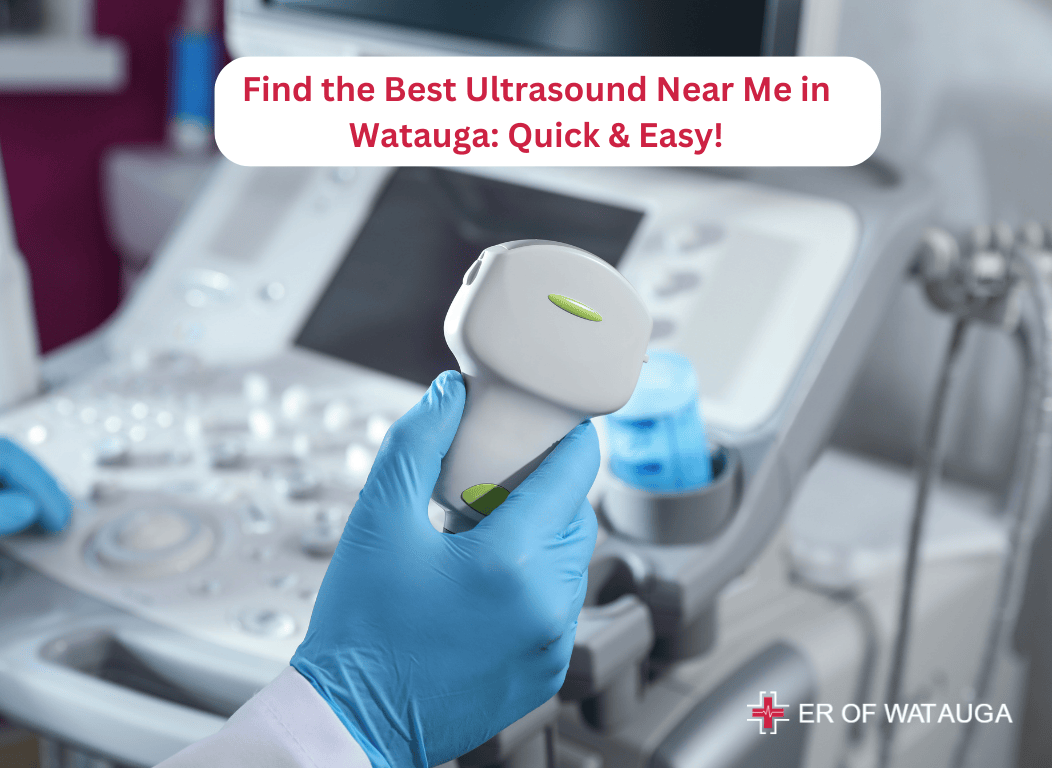Are you curious to know why Gallstones form and how it affects your health? No need to panic, we have got you covered. Approximately 25 million Americans suffer from Gallstones. These tiny, hardened deposits have the power to cause sudden, excruciating stomach pain, turning a wonderful dinner into a miserable evening.
Gallstones are frequent, and most people will not be disturbed by them. If they stay put, you might never notice they’re there. But once they start moving, they become hazardous. These tiny, pebble-like fragments can cause significant damage when they enter narrow areas in your delicate biliary system.
Gallstones can affect persons of any age, however, they are more common in women and the overweight. Therefore, it is imperative that you comprehend the risks and available treatment options for Gallstone if you are experiencing severe feelings in your upper right abdomen. In this blog, we will help you know how to deal with the pain, symptoms, and effects of Gallstones.
What are Gallstones?
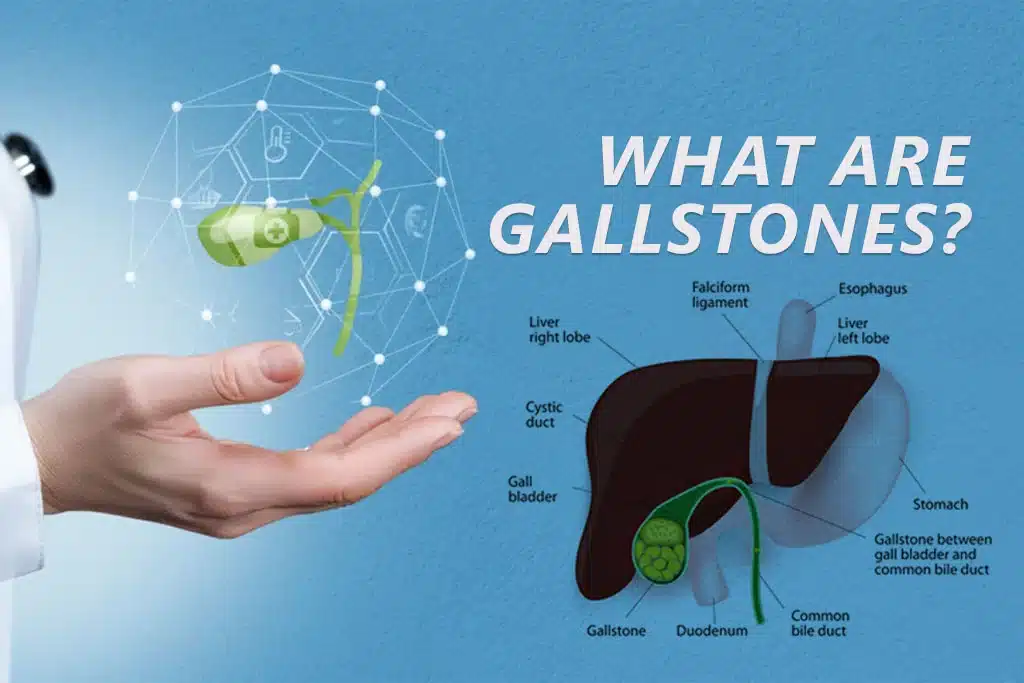
Gallstones are hardened, concentrated particles of bile that form in the gallbladder or bile ducts. The term “gall” refers to bile, hence these are bile stones. The gallbladder is your bile bladder. It collects and stores bile for future use. Your liver produces bile, and your bile ducts transport it to the other organs in your biliary tract.
Healthcare providers may use the term “cholelithiasis” to describe the condition of having Gallstones. The term “chole” also refers to bile, while “lithiasis” refers to the formation of stones. Gallstones occur when bile sediment accumulates and crystallizes. Frequently, the sediment is an overabundance of one of the primary constituents in bile.
How serious are Gallstones?
Gallstones are unlikely to cause complications for you. Many people have them without realizing it. However, they can be harmful if they move through your bile duct and become lodged somewhere. They can obstruct your biliary tract, resulting in pain and dangerous problems.
The difficulty with Gallstones is that they grow slowly but steadily when bile washes over them, leaving behind another coating of sediment. What starts as a grain of sand can grow large enough to obstruct the flow of bile, especially if it enters a small region, such as a bile duct or the neck of your gallbladder.
Do Gallstones Cause Diarrhea?
Gallstones can lead to diarrhea because they impede bile flow, which can disrupt the digestion of fat, especially after a fatty meal. This isn’t the most common symptom, either. The most common symptoms are bloating, nausea, vomiting, and discomfort in the upper right abdomen. See your doctor for a diagnosis and course of therapy if you experience these symptoms.
How common are Gallstones?
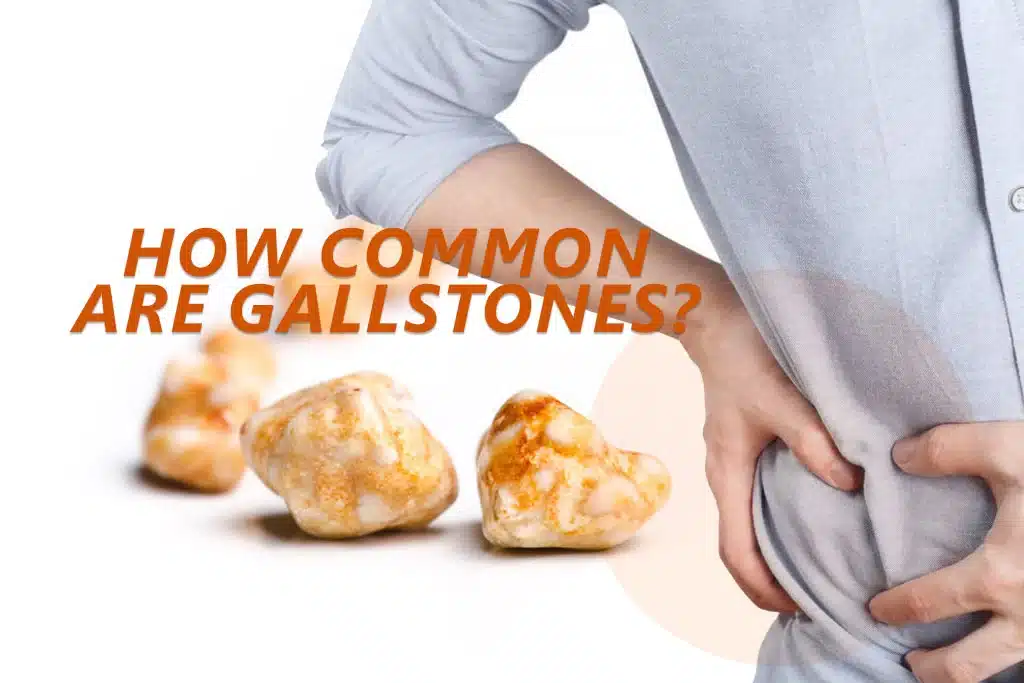
Gallstone affects at least 10% of individuals in the United States, with women and people assigned female at birth accounting for up to 75% of the total. However, only 20% of those identified will ever experience symptoms or require treatment.
What are the Symptoms of Gallstone?
Gallstones usually do not produce symptoms unless they become trapped and cause a blockage. This blockage generates symptoms, the most prevalent of which are upper stomach pain and nausea. These may come and leave or stay. If the blockage is severe or lasts for an extended period, you may develop additional symptoms such as
- Sweating
- Fever
- Rapid heart rate
- Abdominal swelling and pain
- Your skin and eyes have a yellow tint
- Dark-colored pee and light-colored feces
What is Gallstone pain like?
Typical Gallstone pain is sudden and strong, and it might make you sick to your stomach. This is known as a Gallstone attack or gallbladder attack. You may feel it most strongly after eating, when your gallbladder contracts, increasing pressure in your biliary system. It might wake you up.
Biliary colic is the term used to describe Gallstone discomfort that peaks and then gradually decreases. It comes in episodes that might last anywhere from a few minutes to hours. The episode ends when the stone moves or the pressure decreases. People describe their pain as strong, acute, stabbing, cramping, or squeezing. You might not be able to sit motionless.
Where is Gallstone pain located?
Your biliary system is positioned in the upper right quadrant of your belly, beneath your right rib cage. Most patients get Gallstone pain in this area. However, it can occasionally spread to other places. Some patients report feeling it in their right arm or shoulder, or their back between their shoulder blades.
Some persons experience Gallstone discomfort in the center of their belly or chest. This can be perplexing because the sensation may mirror another condition. Some people confuse Gallstone discomfort with heartburn or indigestion. Others may experience symptoms similar to those of a heart attack, which is a separate emergency.
Can you get Gallstones without a gallbladder?
Approximately one in every seven persons who have Gallstones will develop stones in the common bile duct. This is the tiny tube that transports bile from the gallbladder into the intestine. Gallstone history is one of the risk factors. However, choledocholithiasis can develop in persons who have had their gallbladder removed.
Are Gallstone symptoms different in a female?
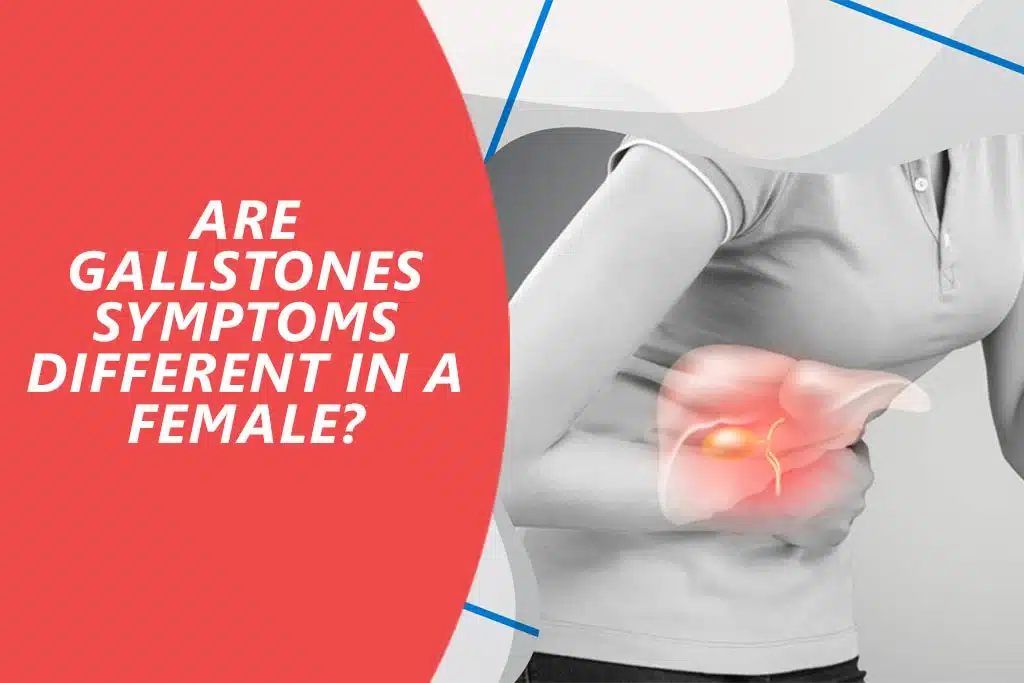
Gallstone symptoms do not differ between women and people who are assigned female at birth. However, patients with AFAB may be more susceptible to experiencing referred pain, which is pain that occurs in a different location than where it originated. As a result, individuals may be more susceptible to Gallstone discomfort in their arms, shoulders, chest, or back.
People with AFAB are also more prone to chronic pain, and they may be more likely to disregard intermittent pain, such as biliary colic. It is critical to consult a doctor about any severe or persistent discomfort, even if it goes away. You are more likely to experience another Gallstone attack if you have had one before.
What triggers Gallstone pain?
Gallstone discomfort indicates that a Gallstone has been lodged in your biliary tract, causing an obstruction. If there is a severe obstruction, you may feel it immediately. If there is only a partial blockage, you may not realize it until your gallbladder contracts, increasing pressure in your system. Eating causes this constriction.
A rich, hefty, or fatty meal causes a larger gallbladder contraction. That’s because your small intestine senses the fat content of your meal and tells your gallbladder how much bile is required to break it down. Your gallbladder responds by compressing bile into your bile ducts.
What are the important warning signs of Gallstones?
Biliary colic is the only warning indication of Gallstones. It occurs when a Gallstone causes a momentary obstruction before moving out of the path and allowing bile to flow freely again. Even if the discomfort finally goes away, it is critical to recognize these occurrences as the warning signs they are.
Once a Gallstone obstructs your biliary tract, it is likely to occur again. The same one could be hanging around in the same tight area, continuing to grow. Alternatively, you could have more Gallstones waiting to form. One day, a Gallstone may become stuck and remain stuck. This would constitute an emergency.
What are the possible complications of having Gallstones?
If a Gallstone obstructs the passage of bile via your biliary system, it can harm any or all of the organs. When bile cannot flow, it accumulates in your bile ducts and organs, producing acute inflammation and promoting bacterial infections. When severe, these illnesses can be deadly.
The complications include:
- Cholecystitis (gallbladder inflammation)
- Pancreatitis (pancreas inflammation)
- Cholangitis (bile duct inflammation)
- Hepatitis (liver inflammation)
- Jaundice (bile in your bloodstream)
- Septicemia (an infection in your bloodstream)
Can Gallstones make you tired and dizzy?
Dizziness and weariness are signs of low blood pressure. These are not the normal signs of Gallstones. However, Gallstone problems might result in low blood pressure. Severe inflammation or infection in your biliary system may cause a quicker heart rate and a reduction in blood pressure.
What causes Gallstones?

Gallstones occur when there is an excess of one of the bile’s basic constituents. The excess component forms sediment at the bottom of your gallbladder or bile ducts, which eventually hardens into stones. Cholesterol stones are the most prevalent form. The other type of stone is pigment (bilirubin).
This process may entail a range of components, such as:
Excessive cholesterol. To produce bile, your liver removes cholesterol from your blood. If there is too much cholesterol in your blood, the proportions of your bile will be incorrect. Bile requires a balance of lipids and acids to keep all of the constituents together. The excess will be discarded.
Excessive bilirubin. Bilirubin is produced when old red blood cells break down. You may have an excess of bilirubin if you have a blood condition that destroys too many red blood cells, or if your liver is damaged and unable to process the typical load of bilirubin into bile.
Insufficient bile acids. Certain disorders might induce bile acid malabsorption, which is when you lose bile acids in your stool. If you lose too many, your liver will be unable to produce adequate bile. A deficiency of bile acids causes an overabundance of lipids (cholesterol) in the bile.
Cholestasis or gallbladder stasis. “Stasis” denotes inaction. If your bile ducts or gallbladder do not adequately move bile through your biliary tract, sediment will accumulate. This could be a problem with the muscles or the chemical signaling that causes them to move.
What risk factors contribute to Gallstones?
A wide range of disorders and ailments can have an impact on bile flow as well as cholesterol, bilirubin, and bile acid levels. However, not everyone with Gallstones has an underlying disease. Normal risk variables include age, genetic profile, hormone levels, and weight swings.
Risk factors include:
Age. Gallstones take time to form and get large enough to cause an obstruction. Men and people designated male at birth (AMAB) are more prone to develop them after the age of 60. Women and people with AFAB are more likely to develop them throughout their reproductive years, which range between the ages of 20 and 50.
Hormones. Women and AFABs are three times as likely to develop Gallstones than males and AMABs. Their risk increases and decreases with their estrogen and progesterone levels. Estrogen raises cholesterol levels, whilst progesterone slows your gallbladder’s emptying.
Weight. Body fat produces estrogen, therefore having more of it increases your estrogen and cholesterol levels. On the other side, rapid weight loss, such as following weight loss surgery, might lead to Gallstones. Losing body fat rapidly releases substantial amounts of cholesterol into your bile.
Genetics. If you are of Native American or Mexican origin, your genetic profile makes you more likely to have excessive cholesterol levels in your bile, which can lead to Gallstones. If you have a family history of Gallstones, you may be more prone to develop them, regardless of your racial background.
How are Gallstones diagnosed?
If you have Gallstone symptoms, your doctor will do blood and imaging testing. Blood tests can reveal inflammation, infection, or jaundice and help determine which organs are afflicted. Imaging studies will assist in determining the source of the blockage in your biliary tract.
What tests can detect Gallstones?
Your provider will start with an abdomen ultrasound, a quick and simple test that requires no preparation. The majority of gallstones in and around your gallbladder can be detected using an ultrasound. However, if a Gallstone is caught someplace else in your biliary tract, you may require a different type of test to locate it.
Other potential tests include:
- Magnetic resonance cholangiopancreatography (MRCP)
- HIDA scan
- Endoscopic ultrasound
- ERCP (Endoscopic Retrograde Cholangiopancreatography)
What is the treatment for Gallstones?
If your Gallstones never cause difficulties, you won’t need to have them treated. However, if they produce a blockage in your biliary path, your doctor will want to remove them entirely, not just the blocked portion. Once Gallstones have caused a blockage, they are extremely prone to do so again.
The majority of people who require Gallstone treatment will undergo surgery to have them removed. Surgery is the only way to assure that gallstones do not cause problems for you again. However, if you are unable or unable to have surgery, there are some alternative therapies available, such as drugs and other procedures.
Gallstone surgery
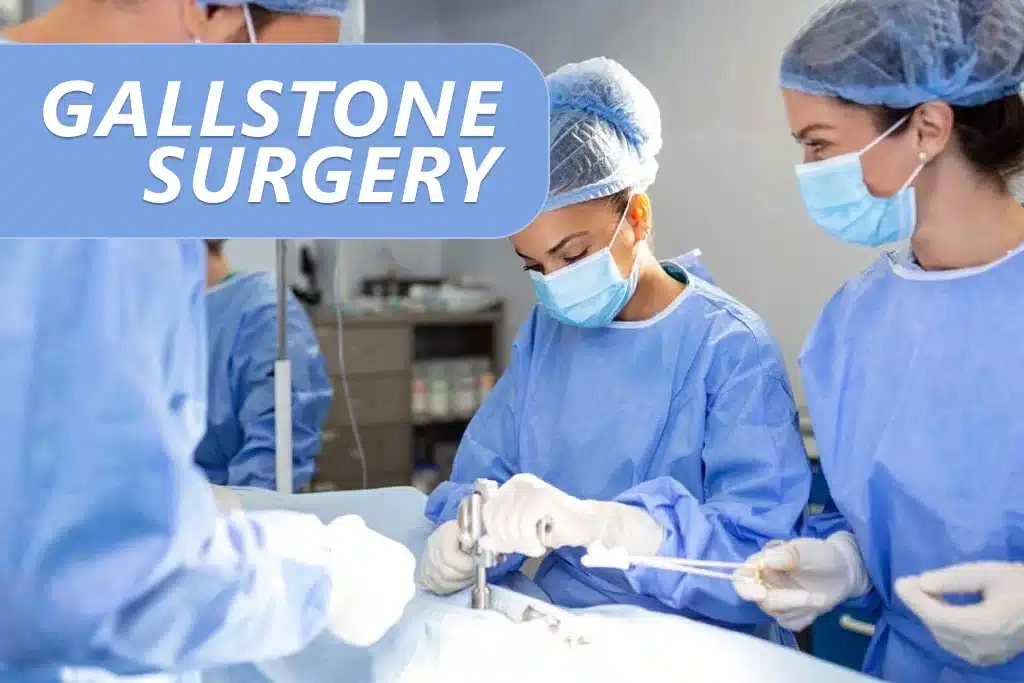
Gallbladder removal (cholecystectomy) is the only effective long-term treatment for Gallstones. It is one of the most popular operations performed in the world, usually by laparoscopic surgery. You can live comfortably without a gallbladder. Bile will now move directly from the liver to the small intestine.
Some persons who require Gallstone treatment are not always in a safe enough state to undergo gallbladder removal surgery. In such circumstances, cholecystostomy is one option. This simple operation inserts a catheter into your gallbladder to drain it. It can eliminate the Gallstones that are currently inside.
Medical treatments for Gallstones
Gallstone medicines are rarely prescribed by healthcare providers due to their ineffectiveness. Ursidol and chenodiol are only effective against tiny cholesterol stones that have not yet created difficulties. It can take months or years to dissolve them, and they frequently recur.
For the majority of people, this is not an effective method of treating Gallstones. However, there may be some cases in which drugs are useful as a temporary or prophylactic strategy. If you are not a suitable candidate for Gallstone surgery, your healthcare practitioner will explain their recommendations to you.
How can I prevent Gallstones from forming?
There is no sure way to prevent Gallstones from forming, but you can take some precautions to lower your overall risk. For example, lowering your cholesterol intake can lower your risk of developing cholesterol stones, which are by far the most prevalent variety. However, this will not prevent pigment stones.
If you are overweight or obese, lowering weight can lower your risk of developing cholesterol stones. But decreasing weight quickly can increase your risk. If you plan to lose weight quickly after an operation or other therapy, your doctor may advise you to take Gallstone drugs as a precaution.
Do Gallstones ever go away on their own?
Gallstones will not go away without therapy. Gallstones can occasionally appear in your stool, but not always. Even if your provider removes a Gallstone from your bile duct, others will remain and can be replaced. The only method to permanently stop them is to remove the gallbladder.
How does it feel to pass a Gallstone?
You’re unlikely to feel a Gallstone transit through your body. A Gallstone must be less than 5 millimeters in order to travel through your common bile duct and into your intestines. This is too little to feel in your intestines, but you may experience pain briefly as it goes through your common bile duct.
What do Gallstones look like in the toilet?
A Gallstone small enough to pass through your common bile duct may be too small to detect in your feces, even if you look for it. However, if you saw a Gallstone in the toilet, it would appear as a small pebble. The form could appear angular rather than smooth. Most are yellow, although a few are brown.
Can you pass Gallstones in your pee?
Gallstones cannot flow through your urine since they have no route of entering your urinary tract. Urinary tract stones are known as kidney stones. Gallstones and kidney stones are similar, yet they pass through separate pipelines. Painful urination is an indication of kidney stones, not Gallstones.
When should I see my healthcare provider about Gallstones?
If you have abrupt stabbing pain in your upper right abdomen or shoulder, particularly after eating, you may be suffering a gallbladder attack. Seek medical assistance immediately. Don’t wait for it to go away; it may not. A healthcare provider can alleviate your pain while determining the source.
If you believe you have had biliary colic in the past, even if it has passed, consult your physician. They will take pictures of your bile ducts to look for Gallstones. If they locate them, doctors will recommend that they be treated before they create further difficulties. Without therapy, Gallstones will form and expand.
Conclusion
A Gallstone attack is an unpleasant way to discover you have Gallstones. You could be even more startled to find that surgery is the suggested treatment. However, gallbladder removal is a frequent treatment with a very good prognosis. Your entire struggle might be over within hours after the initial symptoms. ER of Watauga is your go-to emergency room offering emergency healthcare services for Gallstones in Fort Worth and nearby areas. You can trust us to get reliable diagnostic tests and treatments. Contact us now to book an appointment.
FAQs
Can Gallstones make you tired and dizzy?
Yes, Gallstones can cause weariness and dizziness, particularly if they create inflammation or blockage of the gallbladder, which influences overall health.
How to prevent Gallstones during weight loss?
To avoid Gallstones when losing weight, follow a slow and consistent weight loss plan, eat a well-balanced diet with enough fiber, and stay hydrated.
Which is more painful, Gallstones or kidney stones?
The pain associated with kidney stones is commonly thought to be more extreme than that of Gallstones, however individual experiences may differ.
What takeaway can I eat with Gallstones?
With Gallstones, choose low-fat takeaway options such as grilled chicken or fish with vegetables and avoid high-fat items that may cause gallbladder symptoms.
What happens if Gallstones are left untreated?
If left untreated, Gallstones can cause complications such as inflammation, infection, or bile duct blockage, which can result in severe discomfort, jaundice, or even death.
